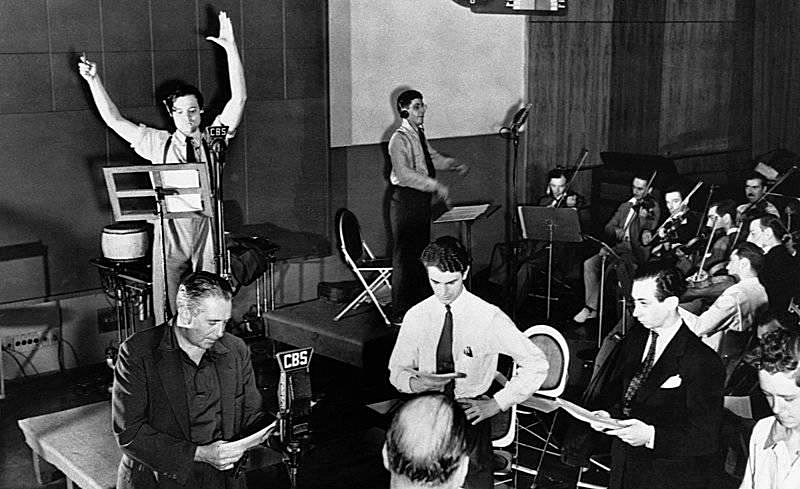In 1952, Citizen Kane was hailed as the best film ever made by Sight and Sound, a prominent British journal of film criticism. For six decades, Orson Welles’ 1941 masterpiece held onto this prestigious title until it was dethroned by Alfred Hitchcock’s Vertigo (1958) in 2012.
While both films share this accolade, they are only connected by one common factor: composer Bernard Herrmann (1911-1975), who provided the scores for both.

Herrmann’s contribution to the history of film composition is remarkable, having created diverse scores for movies by various directors. Apart from working with Welles and Hitchcock, Herrmann set the musical tone for films like The Day the Earth Stood Still (1951) by Robert Wise, Fahrenheit 451 (1966) by Francois Truffaut, and Taxi Driver (1976) by Martin Scorcese.
However, when it comes to pop culture, Herrmann is chiefly associated with one iconic scene: the infamous shower stabbing in Hitchcock’s Psycho (1960). The shrieking and high-pitched violins serve as the chillingly perfect musical backdrop to the horrific visuals.
In his work on Vertigo, Herrmann employed a technique of temporal elongation in his compositions. He took inspiration from the music of Richard Wagner, particularly the renowned Tristan chord found in Wagner’s opera “Tristan und Isolde.” The Tristan chord, consisting of four notes, creates a sense of stagnation and appears disconnected from other chords. Rather than leading the ear to an expected next harmony, the Tristan chord leaves the listener with a sense of unresolved tension and a yearning for continuation.

While most chords have a distinct relationship with others, such as the I-IV-V progression in guitar music, the Tristan chord stands separate from them all. It can be seen as related to every chord simultaneously. This characteristic renders the Tristan chord unresolved and perpetually demanding to move forward.

Hitchcock intentionally excluded music from the famous crop-duster scene and significant portions of the film surrounding it in order to emphasize feelings of alienation. Recognizing that traditional orchestral sounds would not effectively depict otherworldliness, Herrmann incorporated the ethereal theremin – an instrument that would later become synonymous with science fiction movies. In addition to the theremin, Herrmann composed a unique combination of instruments, including two Hammond organs, a large studio organ, pairs of harps and pianos, three vibraphones, two glockenspiels, and three each of trumpets and trombones. The result was a cacophony of low-pitched notes resembling chaotic soundscapes.

Herrmann’s innovative approach to manipulating time through music was not a sudden revelation. He had undergone rigorous classical music training at The Juilliard School and spent years as the conductor of his own chamber orchestra. Through this, he explored the works of modern classical composers. It was during his time with Orson Welles’ radio-show company in the late 1930s that Herrmann found his creative voice, providing music that seamlessly enhanced words and actions.
Discover more from Tension News
Subscribe to get the latest posts sent to your email.

